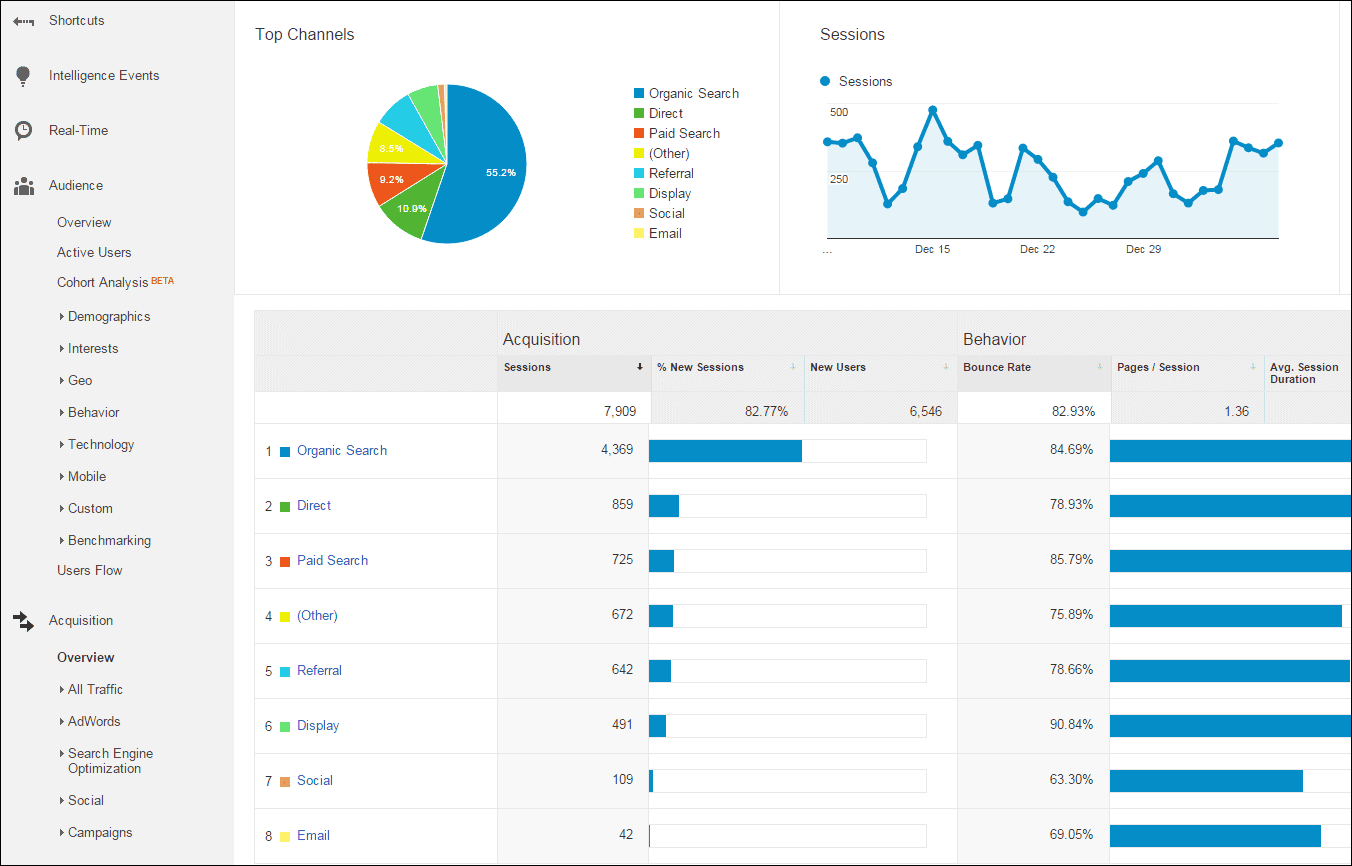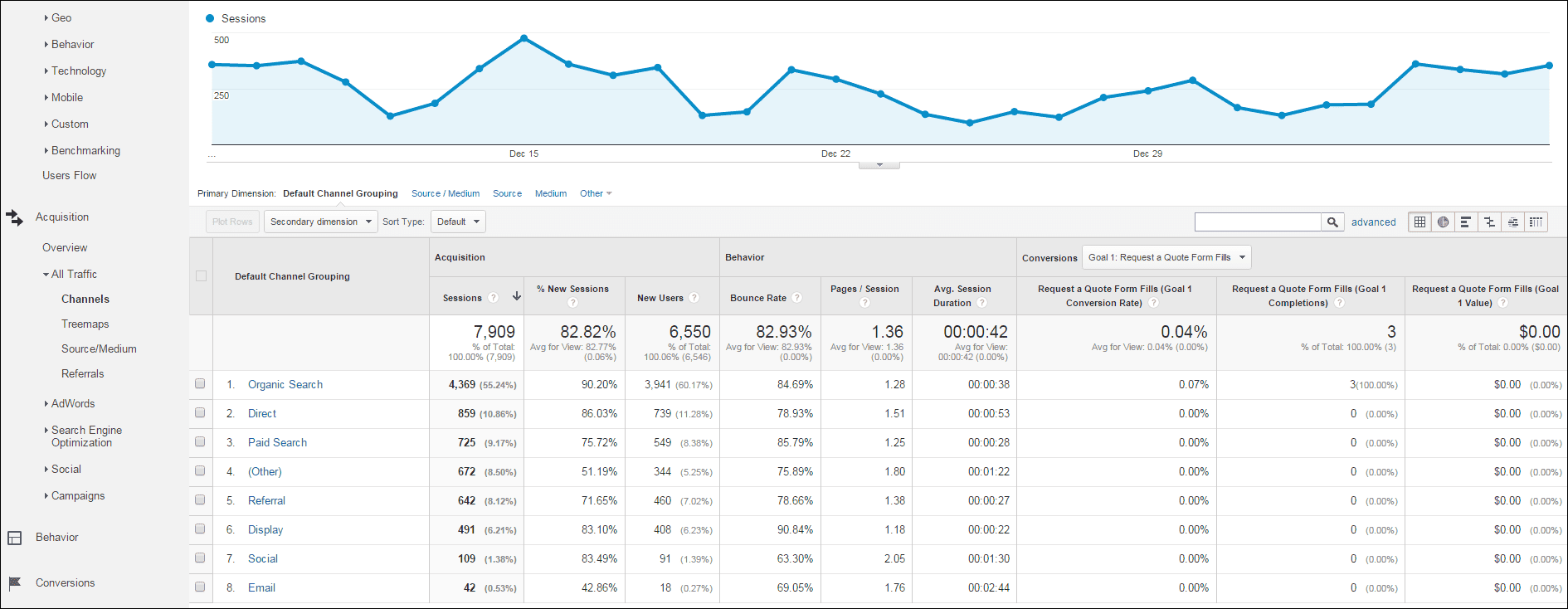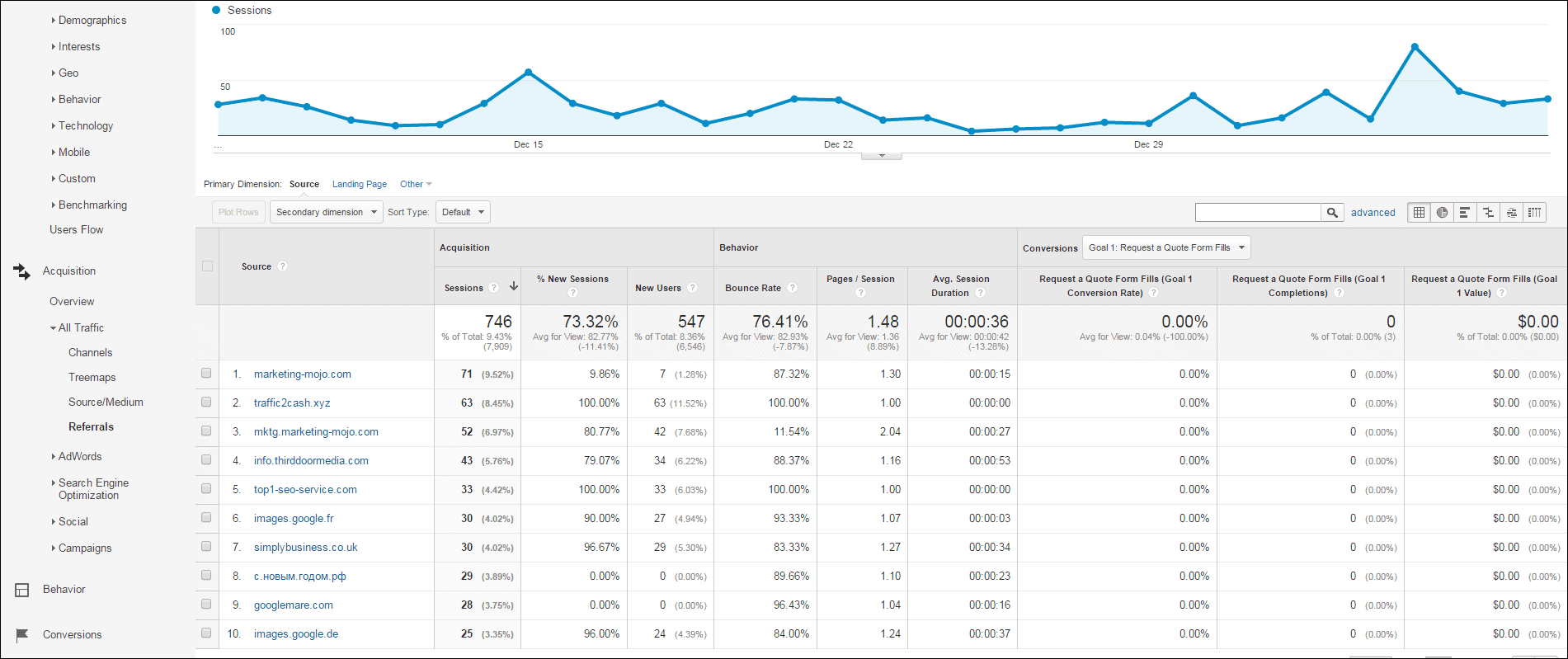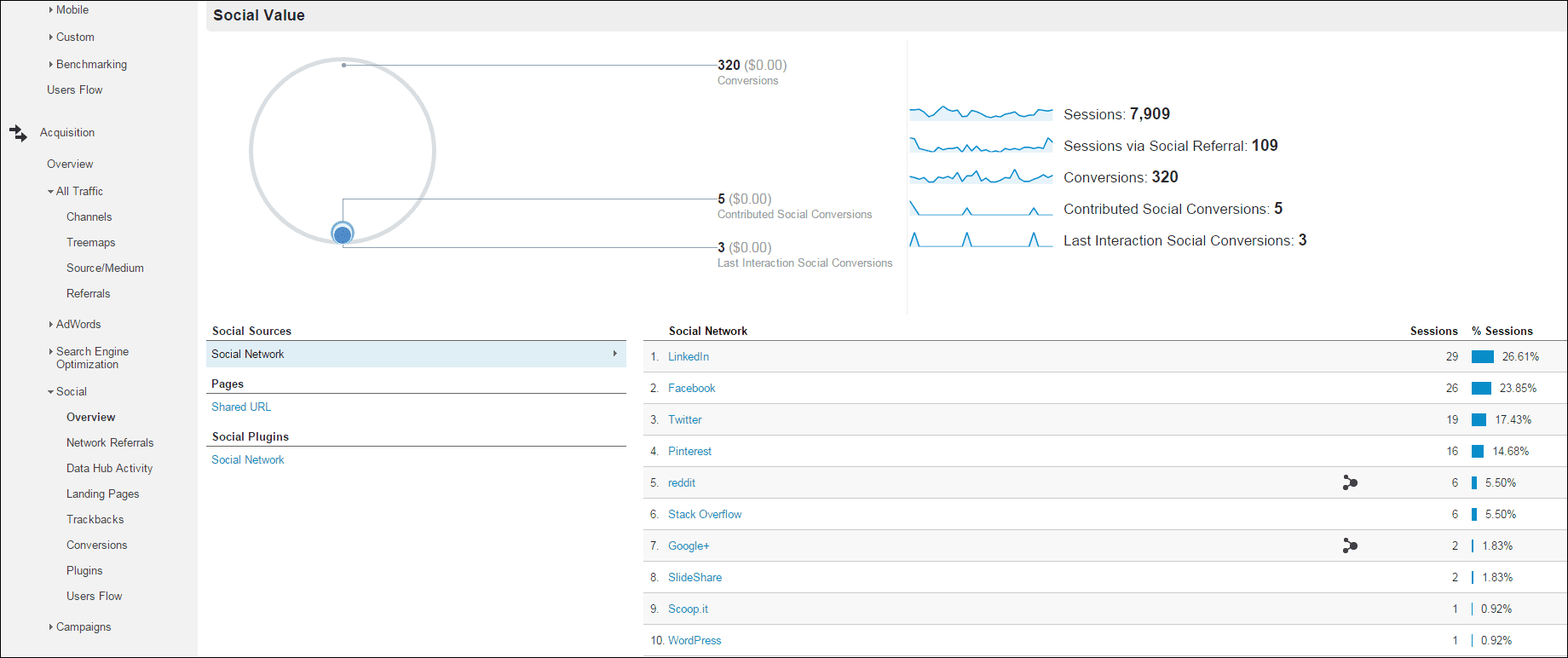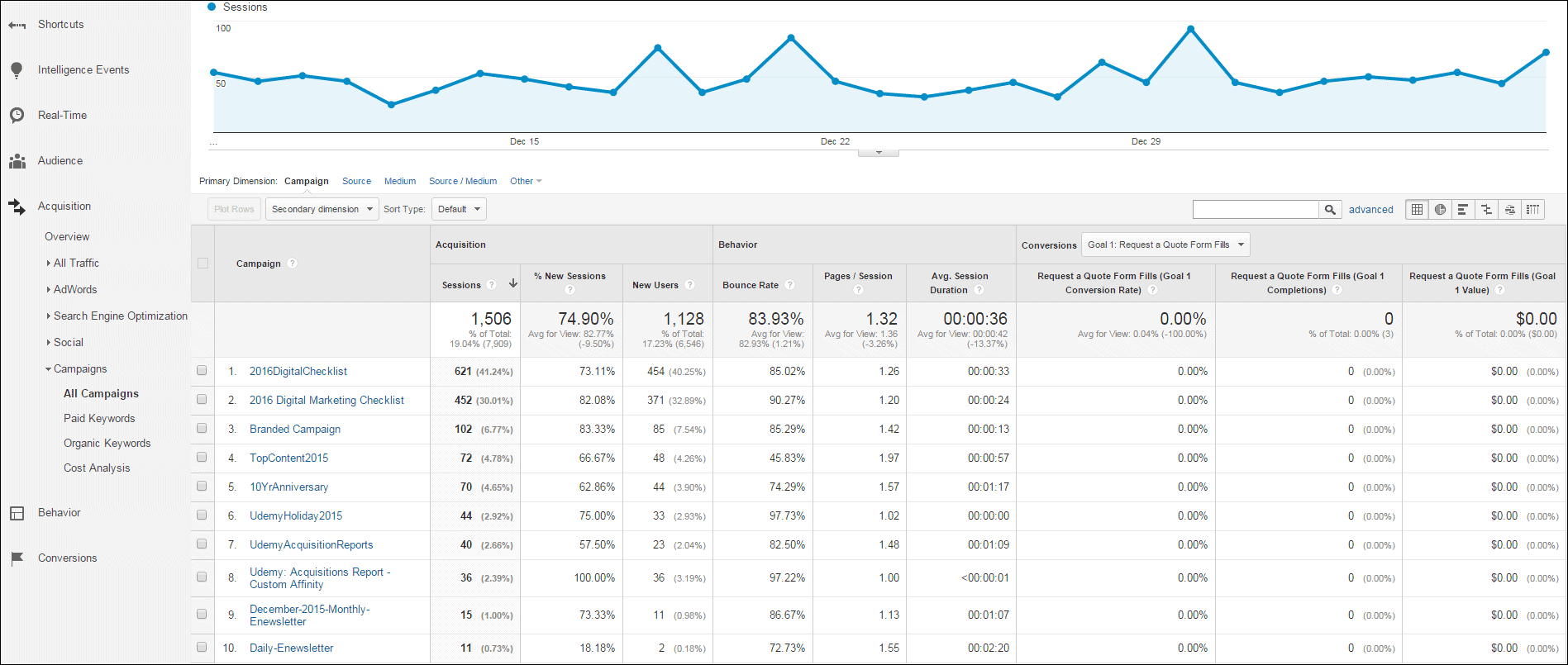Today, businesses can have a wealth of data about their customers and website visitors at their fingertips – data that can help make informed marketing decisions. In my 20 years of marketing experience, I have seen many businesses continue to make costly decisions based on intuition and dated information. Although these may not be poor choices, these are choices that aren’t based on insightful data.
In order to properly evaluate and adjust your digital marketing strategy, you need to know how your promotional efforts are performing. For businesses just starting out with website analytics, tracking your website traffic is an excellent place to begin filling out a larger picture of audience behavior and content performance.
Where Are Your Website Visitors Coming From?
Google Analytics can track your website traffic coming from the following default channels: organic search, direct, paid search, other, referral, display, social and email.
Types of Website Traffic
What do these channels mean? Traffic is reported as:
Organic Search – when a visitor searches for your website or a relevant keyword and clicks on your website in the search engine results page (SERP).
Direct – when a visitor enters your website URL in directly.
Paid Search – when a visitor comes to your website by clicking on a link in one of your search ads.
Other – when a visitor’s source cannot be categorized. This may occur if the UTM parameters for source or medium haven’t been properly set up (this will be explained later).
Referral – when a visitor comes to your website by clicking on a link on another website (except search engines and most social networks).
Display – when a visitor comes to your website by clicking on a link in one of your display ads, then it will be reported as display traffic.
Social – when a visitor clicks on a link pointing to your website from a social network (one that is tracked by Google Analytics), then it will be reported as social traffic.
Email – when a visitor clicks on a link within an email, then it will be reported as email traffic.
Setting Up Google Analytics Tracking
To be able to track these different traffic sources and delve into deeper, more detailed tracking, you need to first have a Google Analytics account set up and the code placed on your website.
Here is Google’s article about setting up Google Analytics tracking. I also have a quick & simple Google Analytics course that will show you step-by-step instructions for setting up your account and tracking.
Which Marketing Efforts Are Driving Traffic to Your Website?
By using Google Analytics, you can determine how your marketing efforts and campaigns are performing. Being able to evaluate the ROI and overall value of current campaigns allows your business to adjust its marketing strategy based on measurable performance metrics. Acquisition reports also help you determine the effectiveness of different sources, such as Twitter, Facebook and LinkedIn, and mediums, such as email, social and digital advertising.
Along with your new source and medium insights, you can identify which pieces of content are popular traffic drivers AND on which sources and mediums they perform best. For example, let’s say that you’ve discovered that one of your blog posts is driving high volumes of traffic and consistently receives a great deal of page views. If you have set up UTM parameters for tracking (explained later), you may also discover that 40% of this traffic is coming from organic, 25% from Twitter and 25% from a monthly email newsletter. With this information, you can begin investing more into these specific sources for the specific type of content or topic. Before you make too many assumptions based on this one data point, you will want to continue to test and evaluate all performance factors, then adjust your marketing strategies and tactics.
Finding Traffic Sources in Google Analytics
Under the Acquisition reports, you will find your main traffic information in Overview. Below, you will see the default channels where your website traffic is being reported.
All Traffic > Channels
All Traffic > Source/Medium
The Source/Medium report is very important to understanding where you should invest your marketing efforts and budget.
If you want to search for a specific content type, topic, page or section of your website, you can create a secondary dimension and then use the advance filter option to search for a keyword. For example, you can view the Source/Medium for individual pages on your blog by creating a secondary dimension for “Page” and an advanced filter for pages containing “/blog/” in the URL. Another way to do this is to create a secondary dimension for Source/ Medium under the Behavior>Site Content>All Pages report and add a filter for “/blog/.”
All Traffic > Referrals
Social > Overview
Campaigns > All Campaigns
Under All Campaigns, you will find all of the campaign names that you have tracked with a UTM campaign parameter. If you’re using Google AdWords, that parameter is added automatically for you on those campaigns, unless you have campaign tagging turned off (it is on by default).
You can click on individual campaigns to see Source/Medium and how your campaigns are performing on different channels and media. From the All Campaigns page, you can also create a secondary dimension to view Source/Medium or even individual pages.
How to Set Up Campaign Tracking/UTM Parameters
Tracking your campaign traffic is as simple as adding some additional text to the URL you are linking to. You will need to add UTM parameters to track your campaign traffic. See our previously published article on UTM Parameters which covers how to do this.
Conclusion
Overall, it is important to properly track and analyze your website traffic, as it can provide you with the data you need to make effective marketing decisions. To learn more on how to use Google Analytics in full detail, you can watch my Google Analytics Reports Deep-Dive: Acquisition Reports course on Udemy. You may even be able to capitalize on traffic drivers you didn’t know you had! What has your traffic told you? I’d love to hear about it! Feel free to comment below or reach out to me on Twitter: @janetdmiller.
THE BEHIND THE SCENES OF THIS BLOG
This article has been written and researched following a precise methodology.
Our methodology
